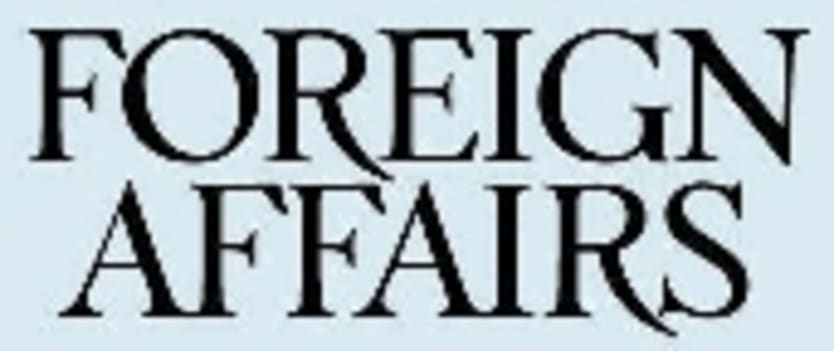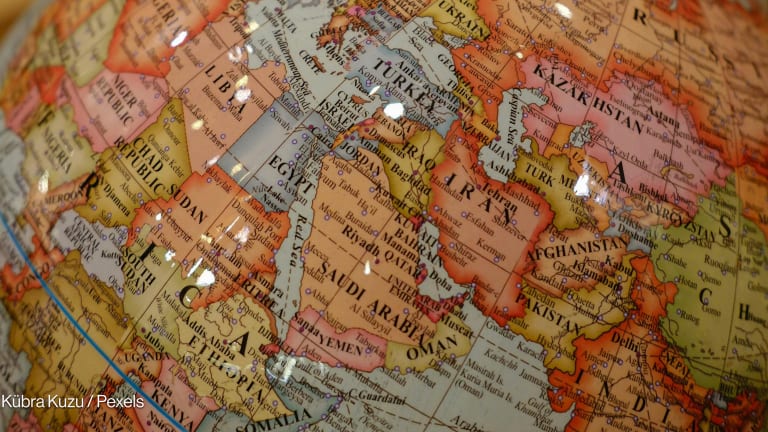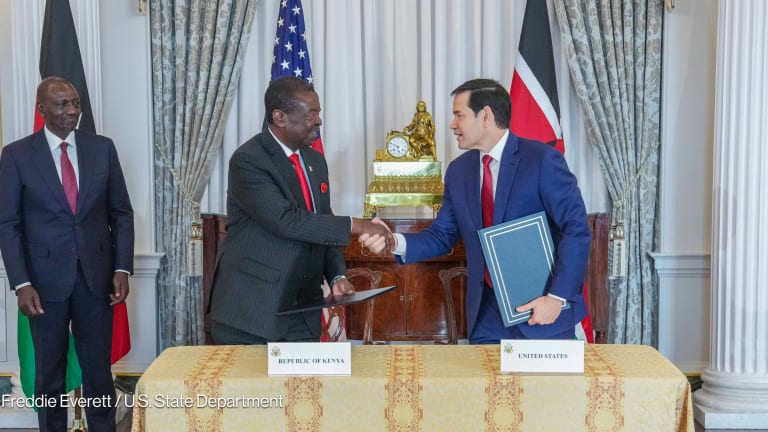
EDITOR’S NOTE: Has the United States not learned from its development work in Pakistan? Three analysts from the Center for Global Development list five lessons from Pakistan that could guide future U.S. engagement in the Middle East and North Africa in this Foreign Affairs article.
Shortly after assuming the presidency, Barack Obama set his sights on reorienting the United States’ relationship with Pakistan. For decades, Washington had been a fair-weather friend to Islamabad, eager to work together when its own security interests were at stake, but otherwise indifferent to Pakistan’s domestic challenges. But recognizing that the fates of South Asia and, ultimately, U.S. security are inextricably linked with Pakistan’s stability and prosperity, Obama signed into law the Enhanced Partnership for Pakistan Act (the Kerry-Lugar-Berman bill) just a few months into his first term. The bill authorized up to $7.5 billion in aid to Pakistan’s civilian government over five years and was meant to usher in a new era of partnership and bolster democracy.
Nearly three years later, reality has set in. The partnership, although initially energized by the late Richard Holbrooke, Obama’s special envoy to Afghanistan and Pakistan, was hamstrung from the outset. The problems do not stem only from the U.S. drone campaign and the covert raid that killed Osama bin Laden, nor is Islamabad’s failure to take on difficult domestic reforms solely to blame. The problems are also due to the United States’ inability to insulate medium-term development investments from diplomatic and security pressures and its overreliance on a complicated and creaky foreign aid system to administer development programs.
Even as officials at the White House, in the State Department, and at the U.S. Agency for International Development (USAID) cope with the problems of doing development well in Pakistan, they are in danger of repeating the mistakes made there in yet another civilian aid ramp-up. This time, Washington plans to use aid for political and economic development in the Arab Spring countries: Egypt, Libya, Tunisia, and, perhaps, a few more players to be named later. The administration’s starting point is a request earlier this year that Congress establish the $770 million Middle East and North Africa Incentive Fund. The initiative is a vaguely defined plan to “support citizens who have demanded change and governments that are working to deliver it.” Pakistan has several lessons for future U.S. engagement with the countries of the Arab Spring.
First, it is fruitless to assume that U.S. civilian assistance provides serious leverage for democratic or other reforms, particularly when a recipient’s civilian government exists in the shadow of a dominant military. The cardinal rule of Pakistani politics is that the military chooses the piece of the budget pie it wants. Civilian agencies are left to fight over the crumbs. U.S. assistance has not changed that fact; it did not strengthen the civilians’ hand with the military, nor did it induce it to undertake politically costly reforms such as raising energy prices. It is naive to imagine that threats to revoke U.S. civilian aid – a small portion of GDP directed to specific projects – carry much weight with Pakistan’s military intelligence establishment or even with the civilian government. The same would be true in Egypt. Civilian aid might help get the United States a seat and a voice at the policy table on difficult technical issues. But it cannot – on its own – coax change where there is no political will.
Second, it is unwise to spend aid dollars without general agreement among administration officials, and with Congress, on why those dollars are being spent. An enduring source of tension within the U.S. government is the disagreement between its foreign policy and development arms about the main goal of U.S. economic assistance. The White House, U.S. diplomats, and many in Congress want an early and visible return. They are motivated by a desire to improve the United States’ standing in the short run. Those in the development community want investments to improve governance over the long haul, independent of their immediate visibility and impact. In some cases, the two objectives overlap. In many others, they are at odds. The absence of a shared vision is further compounded by confusion about who is in charge of U.S. development policy, an issue that was further muddied by the creation of the special envoy for Afghanistan and Pakistan at the State Department, and which could haunt the department’s new office of Middle East Transitions.
Third, a consensus in Washington on why the United States should spend aid dollars should be matched by a consensus on which activities those dollars are for. What has been missing in Pakistan – and what the United States cannot afford to get wrong in the Middle East – is a coherent strategy for deploying aid dollars that has buy-in across U.S. government agencies and in the countries themselves. In Washington, the assistance strategy for the Middle East should be sold to Congress as risky, but worth the risk. It should also be sold as limited in generating leverage on tough political and diplomatic issues. It should clearly articulate the goals of U.S. assistance, how policymakers will monitor progress, and how discrete U.S.-financed development projects might contribute to achieving those goals.
More important, assistance should not be the principal tool for engagement with the post-Arab Spring regimes. Rather, the strategy should focus on initiatives to expand trade and support private sector investment, and should reflect collaboration with the World Bank and the European Bank for Reconstruction and Development (EBRD), both active in Arab Spring countries, on helping countries with labor, tax, and competitive reforms they so desperately need.
Fourth, Washington should have lower expectations about its own ability to manage a significant civilian surge. In hindsight, the Obama administration and those on Capitol Hill greatly overestimated the readiness of U.S. civilian agencies to rapidly expand the scope of their operations in Pakistan. Human resource constraints, evident from the start, abound: one-year posts for diplomats who cannot bring their families, harsh restrictions on leaving the embassy compound, and a frequently unhelpful (and occasionally hostile) host government have all played their parts. Those facts on the ground, combined with the stifling reporting requirements imposed by Washington that have become standard fare for development programs, have further limited the United States’ agility. And, on top of all these constraints, sat the State Department’s mandate that half of all U.S. aid be channeled through local (Pakistani) entities. The directive was a well-intentioned but overly ambitious operational shift in a country with deep governance problems. U.S. civilian agencies do have a large, established presence in Egypt (although less so in neighboring countries), but Washington would be wise to ramp up operations gradually and invest now in developing a cadre of Arab Spring hands.
Fifth, Washington should leave logos behind. When you do a good deed for a friend but insist that your friend wear a sign advertising your virtue, you defeat your purpose. In Pakistan, branding has often driven U.S. development priorities, rather than the other way around. It is understandable that Washington has a deep interest in ensuring that the government – as well as the American taxpayers – gets credit for the assistance it provides. But using salability as a litmus test ensures that many worthy projects will not be pursued. Policymakers thinking about Egypt should keep in mind that credit flows to the benefactors of good, well-designed development projects, not to those with the flashiest donor agency symbols.
The United States has considerable resources and expertise upon which it can draw to help the leaders of the Middle East and North Africa’s transitional democracies. Yet to do so effectively requires U.S. policymakers to recognize both the strengths and weaknesses of the United States’ development machinery. The United States can and should exploit its expertise across its public and private sectors, but it should not always pair that expertise with massive bilateral aid packages. Even when aid does begin to flow, it need not flow only – or primarily – through U.S.-managed programs. Other donors and institutions are often better placed to deliver assistance, and pooling resources with them reduces the burden on recipient country officials. Finally, instead of obsessing about getting credit for American largesse, U.S. policymakers should ensure that they support good ideas – even when pioneered by others.
With access to resources, technology, and technical expertise, the United States has much to offer the countries of the Arab Spring. But, as the case of Pakistan shows, the United States’ power and abilities have clear limits. The country that prospered by skillfully exploiting the concept of comparative advantage would be well served by returning to its roots.
Republished with permission from the Foreign Affairs magazine. Read the original article.








